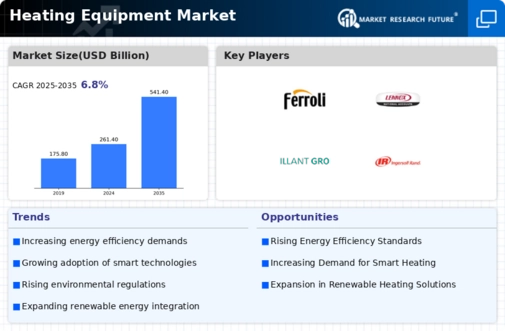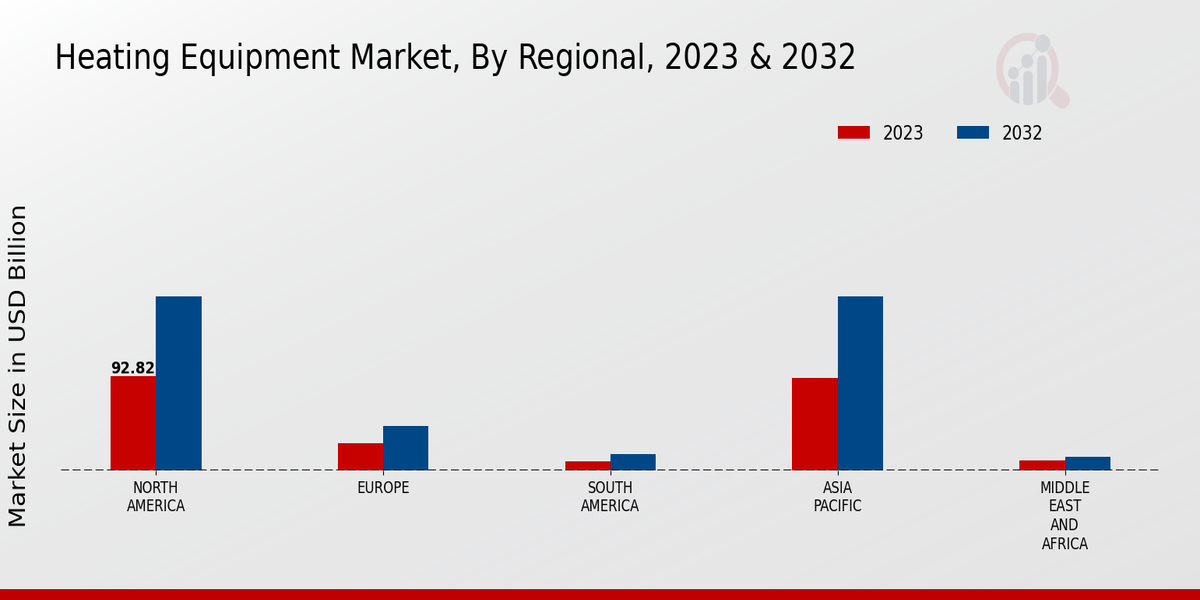Market Growth Projections
The Global Heating Equipment Market Industry is projected to experience substantial growth over the coming years. With a market value expected to reach 261.4 USD Billion in 2024 and further expand to 541.4 USD Billion by 2035, the industry is on a robust upward trajectory. This growth is supported by a compound annual growth rate (CAGR) of 6.84% from 2025 to 2035. Such projections indicate a strong demand for heating solutions driven by factors like urbanization, technological advancements, and increasing consumer awareness of energy efficiency.
Government Incentives and Subsidies
Government incentives and subsidies are pivotal in promoting the adoption of advanced heating technologies within the Global Heating Equipment Market Industry. Various countries are offering financial support to consumers who invest in energy-efficient heating systems, thereby reducing the initial cost barrier. These initiatives not only encourage consumers to upgrade their heating solutions but also stimulate market growth by increasing overall demand. As governments continue to prioritize sustainability and energy efficiency, the impact of these incentives is likely to be felt across the industry, further driving the market towards its projected growth trajectory.
Rising Demand for Energy Efficiency
The Global Heating Equipment Market Industry experiences a notable increase in demand for energy-efficient solutions. Governments worldwide are implementing stringent regulations aimed at reducing energy consumption and greenhouse gas emissions. For instance, energy efficiency standards are becoming more prevalent, pushing manufacturers to innovate and develop advanced heating technologies. This shift is reflected in the projected market growth, with the industry expected to reach 261.4 USD Billion in 2024. As consumers become more environmentally conscious, the demand for energy-efficient heating systems is likely to continue to rise, driving market expansion.
Urbanization and Infrastructure Development
Urbanization is a driving force behind the Global Heating Equipment Market Industry, as increasing populations in urban areas create a higher demand for heating solutions. Rapid infrastructure development in emerging economies is leading to the construction of new residential and commercial buildings, which require efficient heating systems. This trend is particularly evident in regions experiencing significant population growth, where the demand for reliable heating solutions is paramount. As urban centers expand, the market is likely to see a substantial increase in heating equipment installations, contributing to an anticipated CAGR of 6.84% from 2025 to 2035.
Increasing Consumer Awareness of Sustainability
Consumer awareness regarding sustainability is significantly influencing the Global Heating Equipment Market Industry. As individuals become more informed about the environmental impact of their choices, there is a growing preference for eco-friendly heating solutions. This shift in consumer behavior is prompting manufacturers to prioritize the development of sustainable products, such as those utilizing renewable energy sources. The increasing demand for sustainable heating options is expected to contribute to the market's growth, as consumers seek to reduce their carbon footprint and embrace greener alternatives in their heating systems.
Technological Advancements in Heating Solutions
Technological innovation plays a crucial role in shaping the Global Heating Equipment Market Industry. The emergence of smart heating systems, which integrate IoT technology, allows for enhanced control and efficiency. These systems can optimize energy usage based on real-time data, leading to significant cost savings for consumers. The ongoing development of renewable heating technologies, such as solar thermal systems, further contributes to market growth. As these advancements become more mainstream, they are expected to attract a broader consumer base, thereby propelling the market towards its projected value of 541.4 USD Billion by 2035.






